Last updated: February 21, 2023
While searching for ecotourism destinations in Puerto Rico, I found out about Plenitud, a natural and sustainable eco-farm.
The pictures on their website and mission sounded great. So I called and emailed and arranged my own private visit before our drive to the St. Regis Bahia Beach.
These are my notes and photographs from visiting the farm and meeting their team on Monday afternoon, April 15, 2019.
About the Plenitud Farm
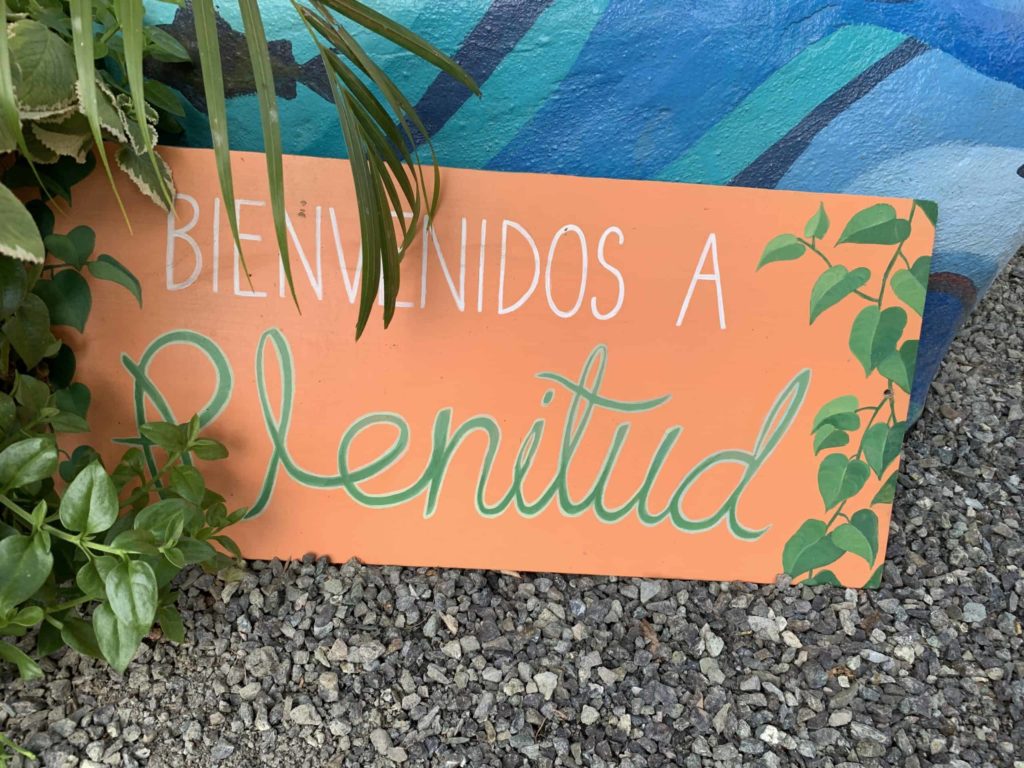
Plenitud is located towards the west of Puerto Rico. It is a sustainable farm and educational project. They are grounded in the principles of permaculture.
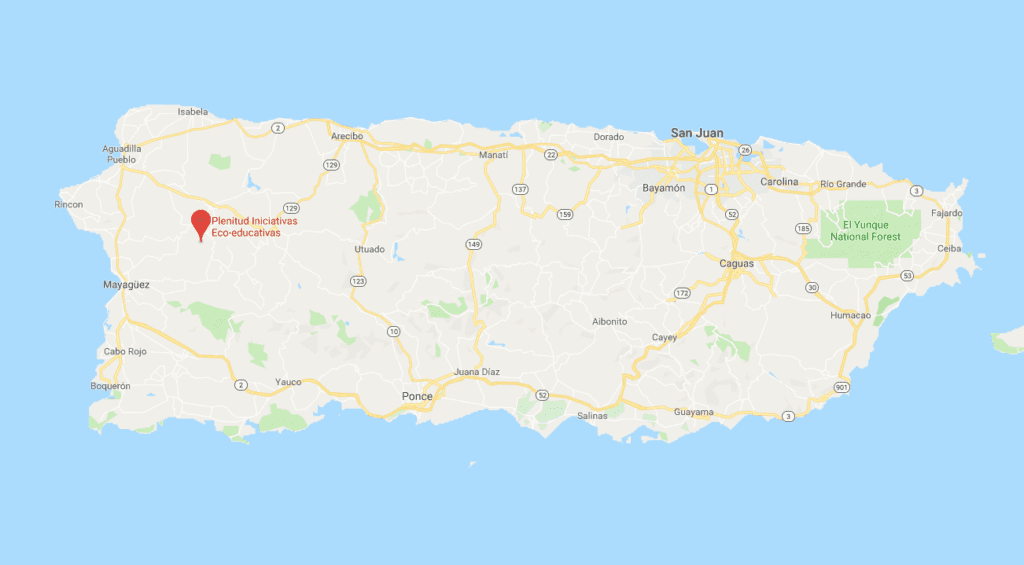
The farm is 15 total acres in size. Eight people work there today, and more are hired for busy seasons.
From their website:
Plenitud PR is a non-profit educational farm and community dedicated to service in sustainability and the arts… At the heart of our service is experiential learning in sustainability and the arts that engages people in community service, fosters relationships, and creates connections.
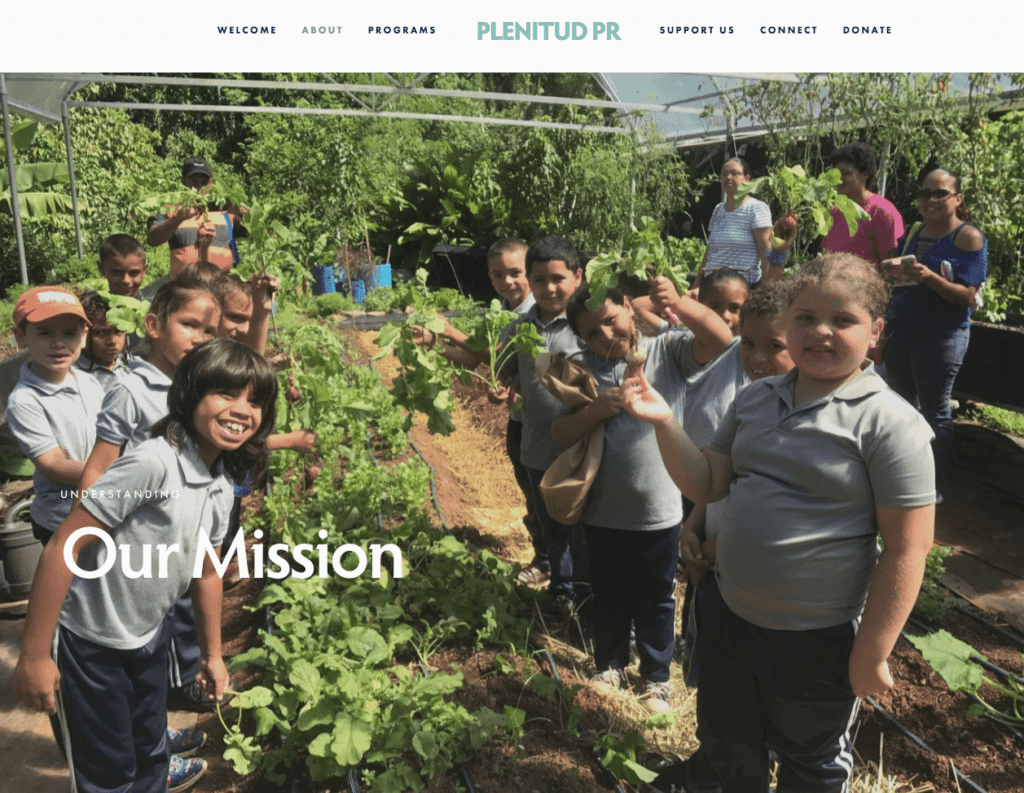
Why Do I Care?
I love the idea of visiting a farm. I live in New York City and am surrounded by a concrete jungle. Seeing where my food is grown and touching dirt are far from everyday happenings in Manhattan.
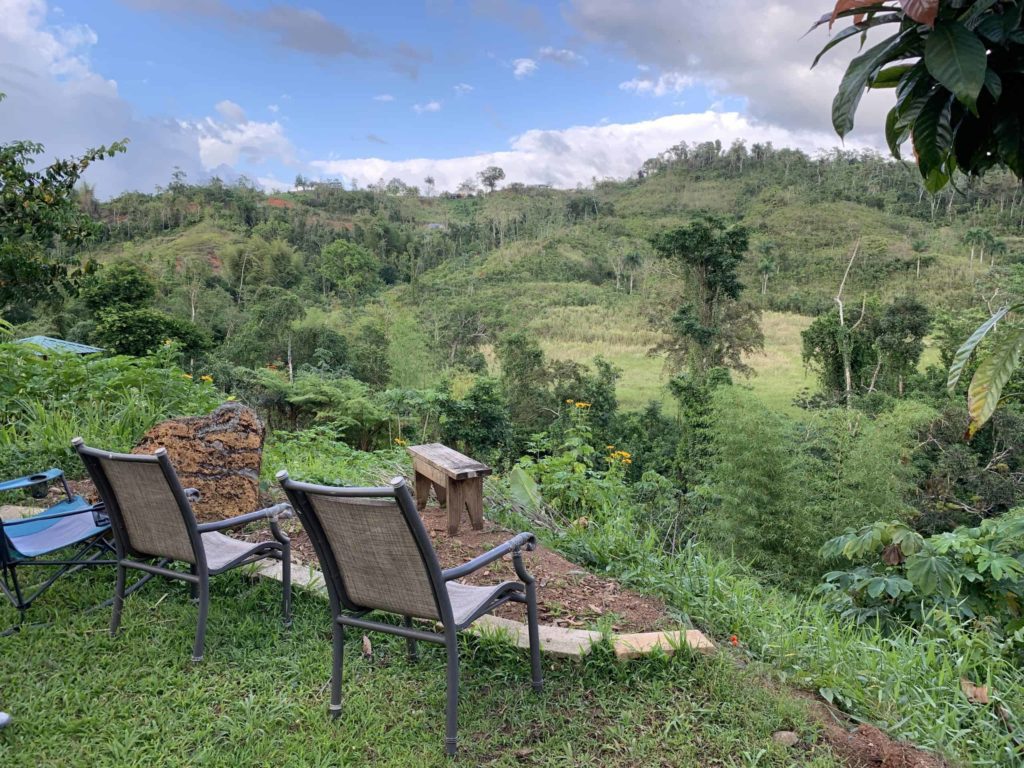
Visiting the Plenitud Eco-Farm and Property
Owen and Paula, co-founders of Plenitud, greeted us warmly at the top of the property. The entrance gate is covered in Puerto Rican flags and general spirit.
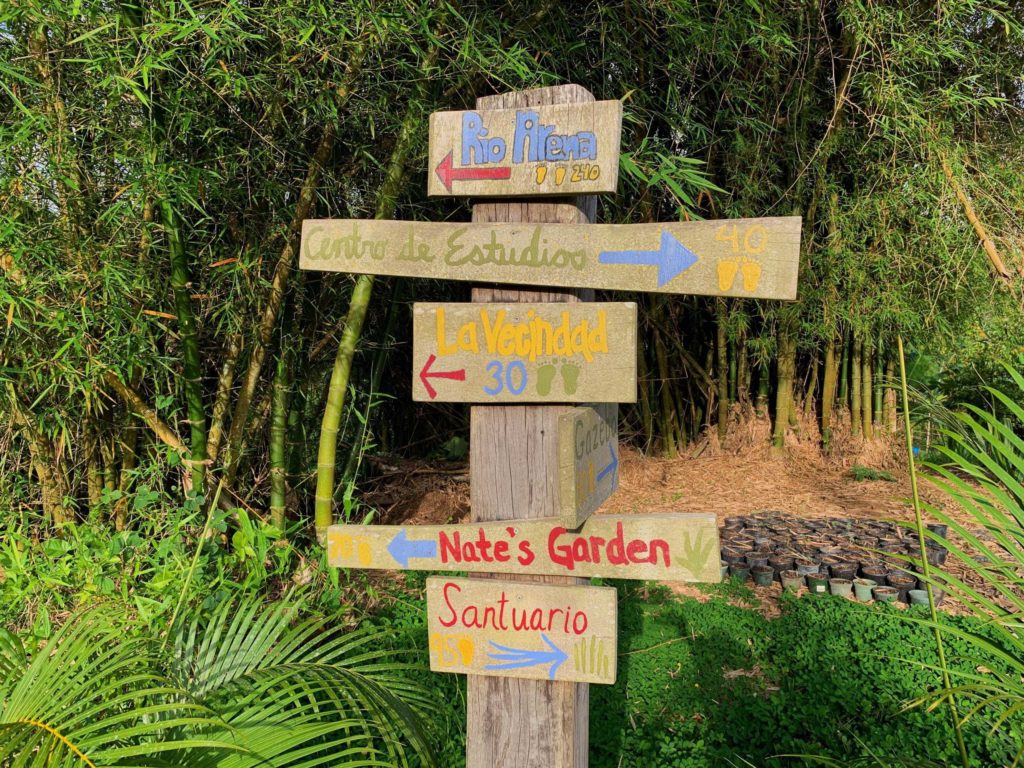
There were also three German Shepherd-like puppies by the entrance. This place is great!, I immediately thought.
After a brief orientation and tour, we would pick some of our salad ingredients to be prepared for lunch.
Superadobe Home in Puerto Rico
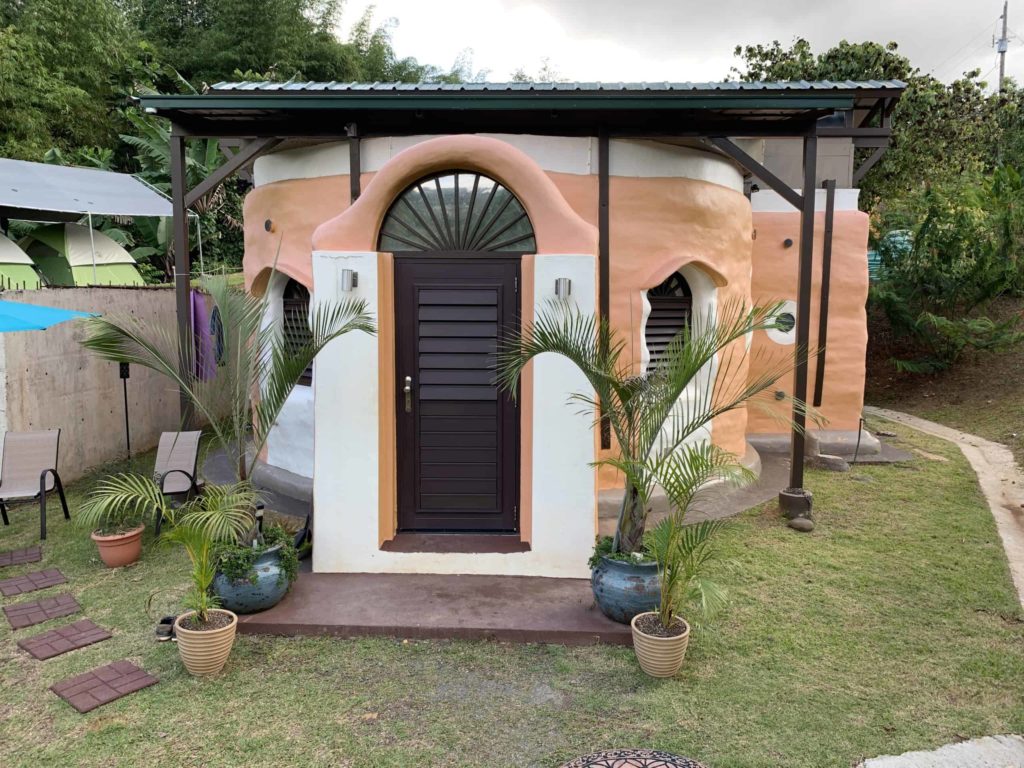
The first stop on our tour was to learn about sustainable construction methods. Paula showed us a few new superadobe projects that were currently in progress. These are labor-intensive but weather-proof homes that they are training locals to construct.
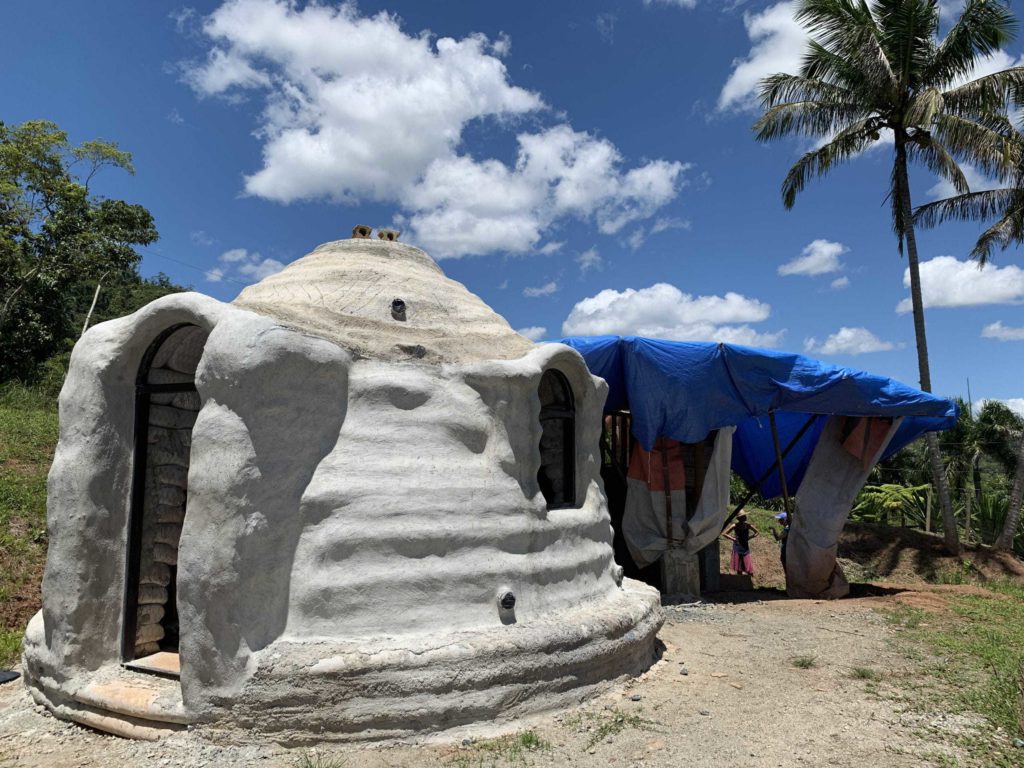
Originally, some locals made fun of these superadobe structures and their odd shapes. But after the recent hurricanes, when a finished superadobe house on their property survived and weathered the storms without a scratch, there was a greater sense of respect for these.
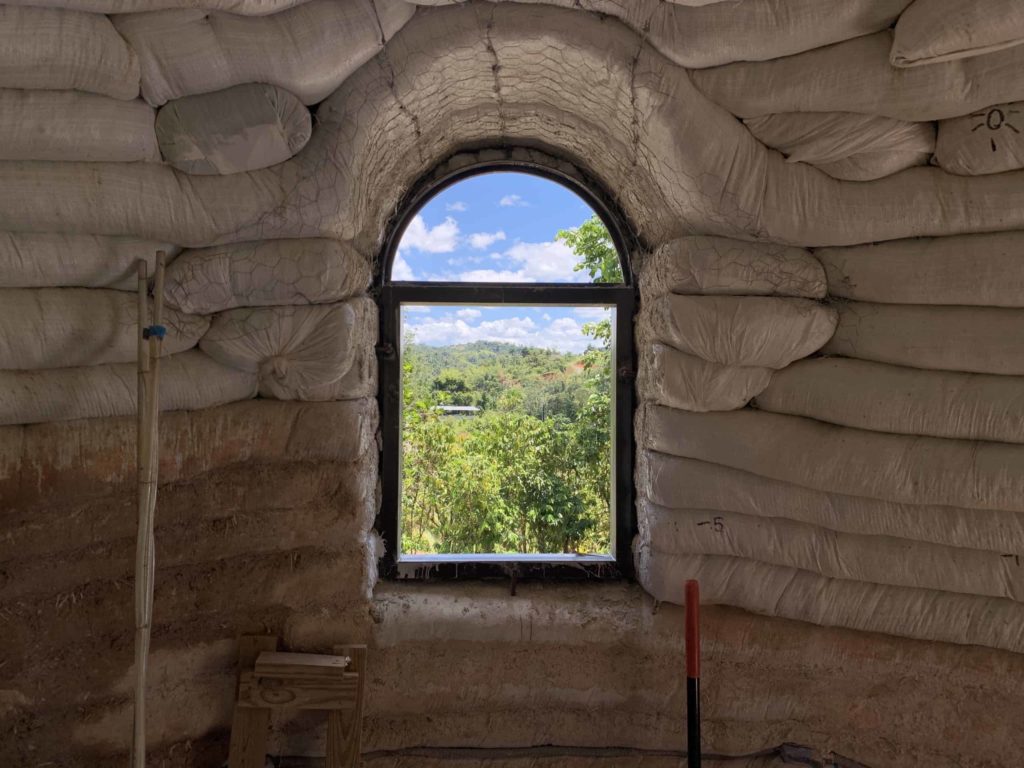
Walking through an adobe structure, we could immediately feel the cooling effects. While it looked funny, it felt very nice inside. Sturdy and cool and peaceful.
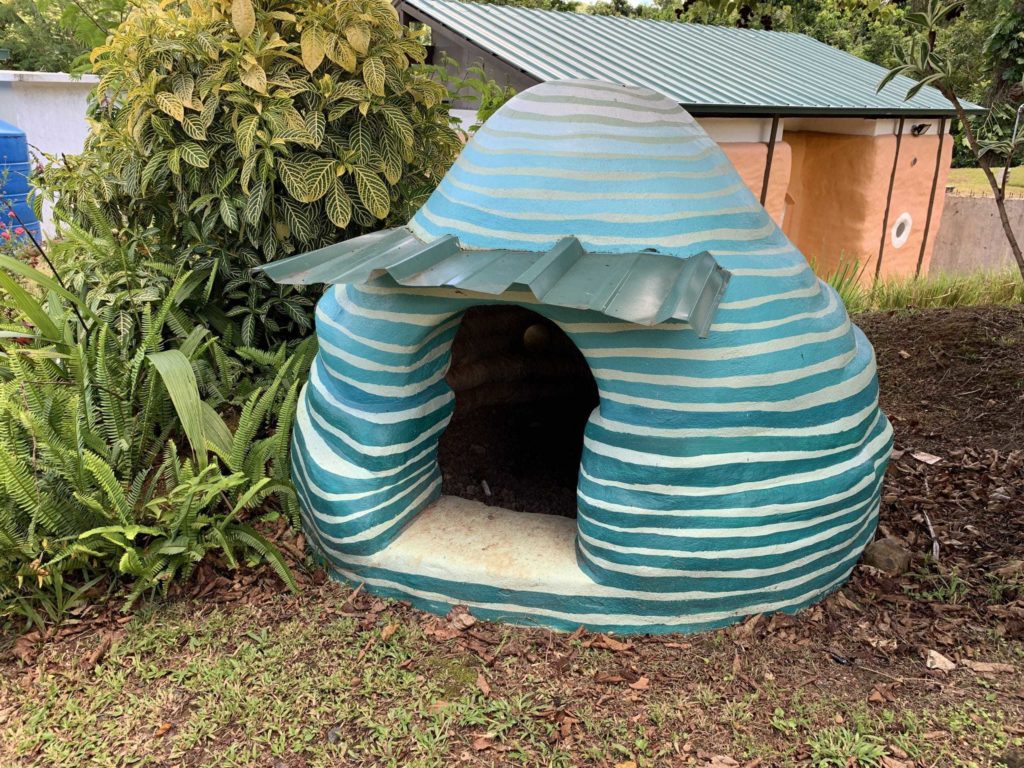
Variety of Plant Life
Next we went to explore the gardens.
As we walked down the hill, Paula explained to us the terraced garden technique that they engineered to preserve the hillside and prevent against erosion.
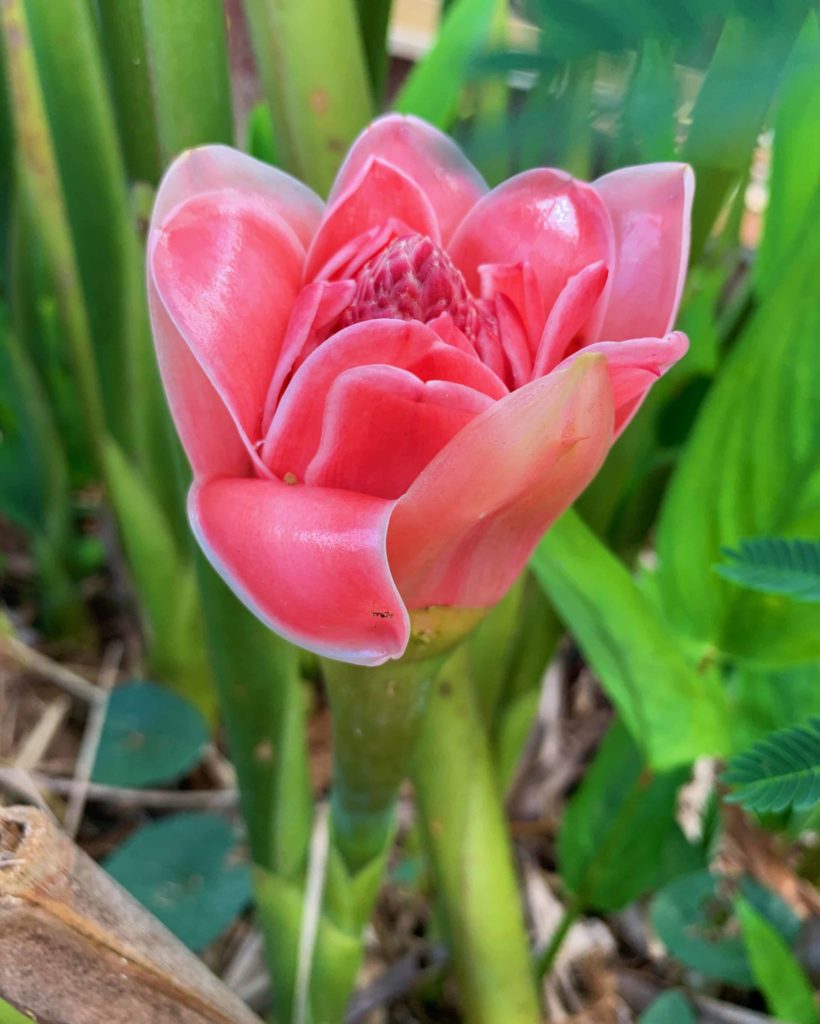
We saw some thick-rooted grass which they plant on either side of a hill to bind the soil. This was another occasion for some “I told you so’s” (my interpretation, not Paula’s) after the hurricane. The Plenitud farm did not experience as many landslides as other properties nearby who had mocked their planting of this grass.
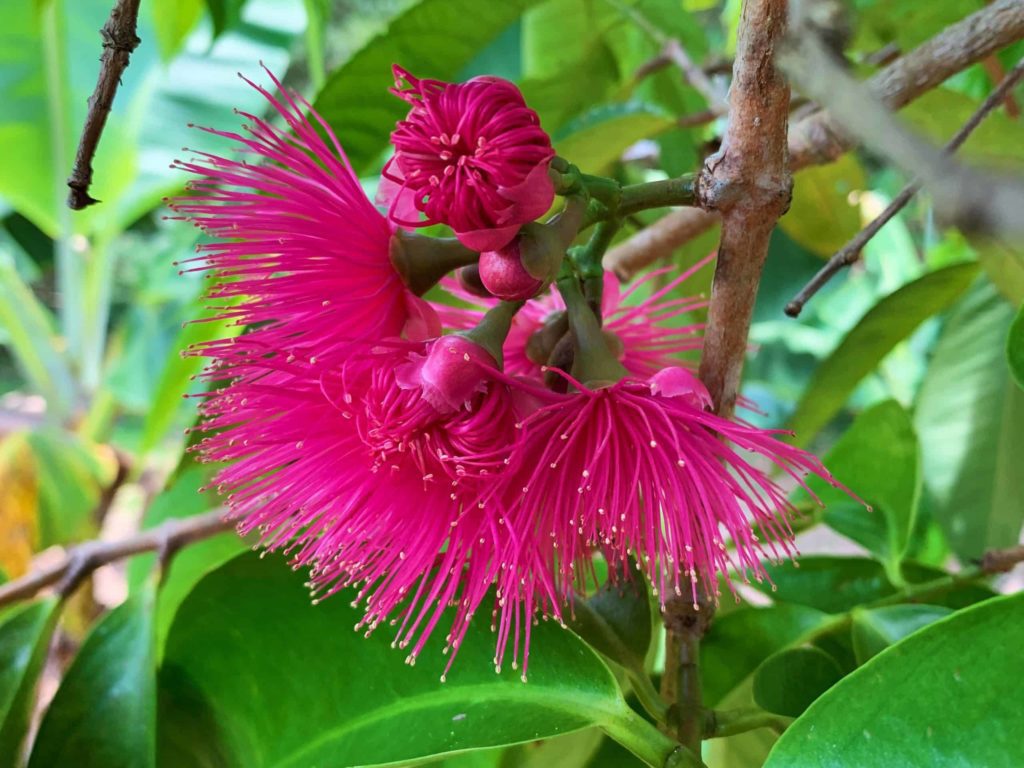
Harvesting Our Lunch
Every day on the farm, the staff eats lunch together, putting all work aside to be present for the communal meal. We would now help in that process by harvesting some vegetables.
Daikon radishes
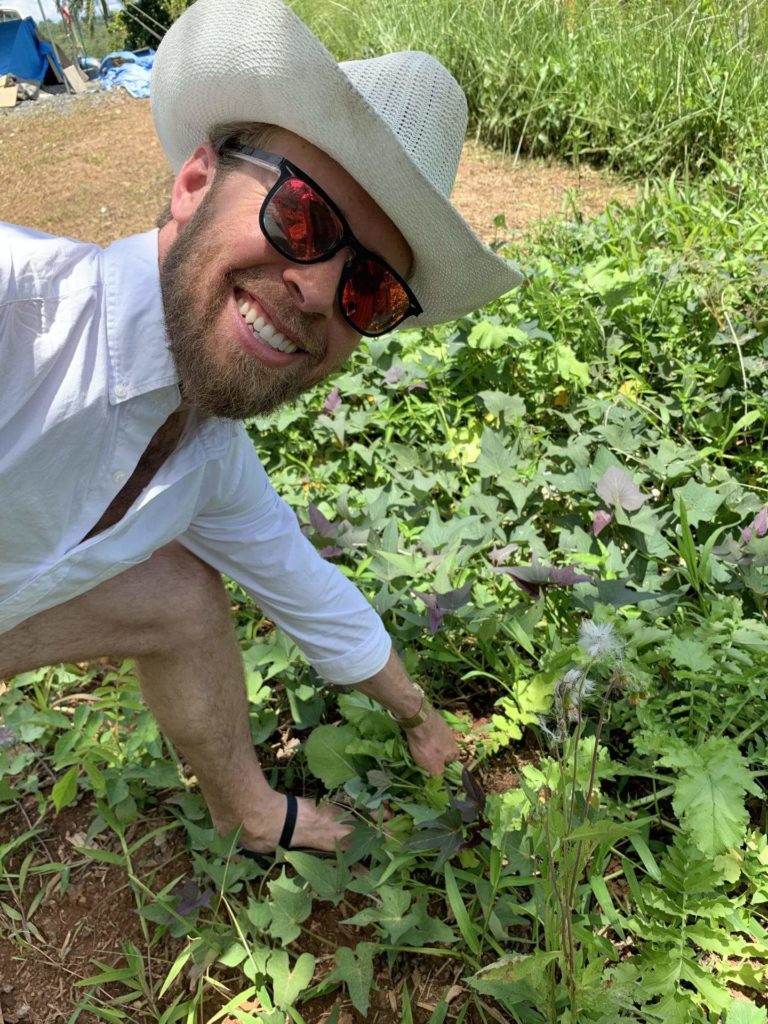
The first vegetable that we pulled from the ground was daikon. The soil seemed full of clay.
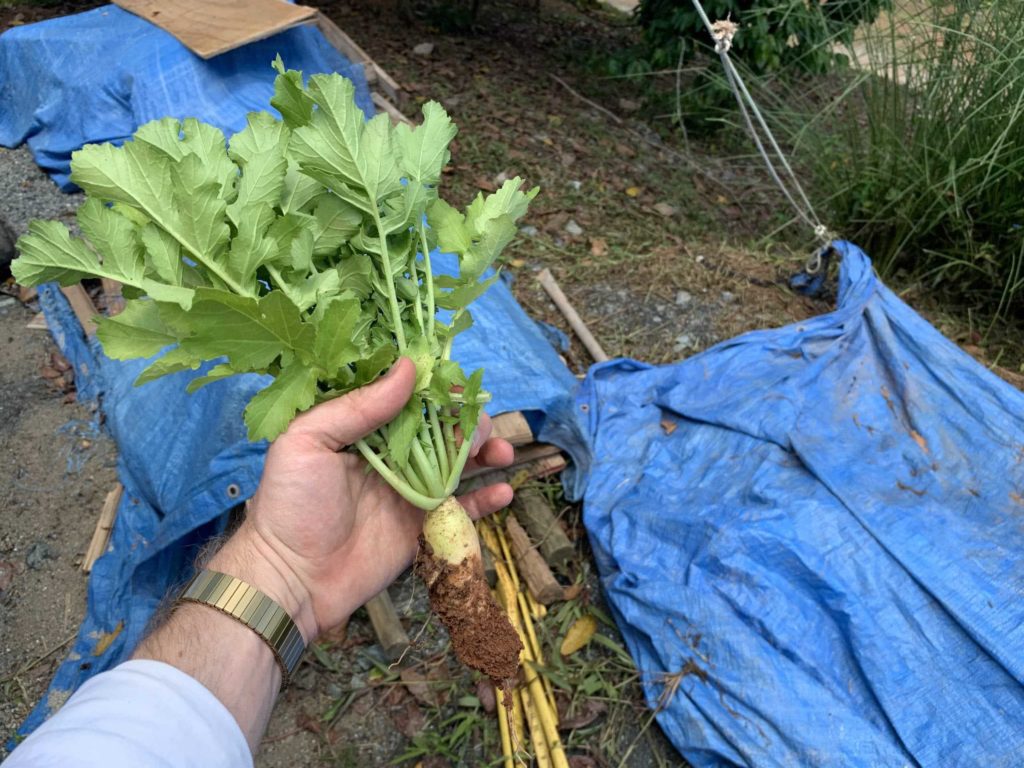
Breadfruit in Puerto Rico
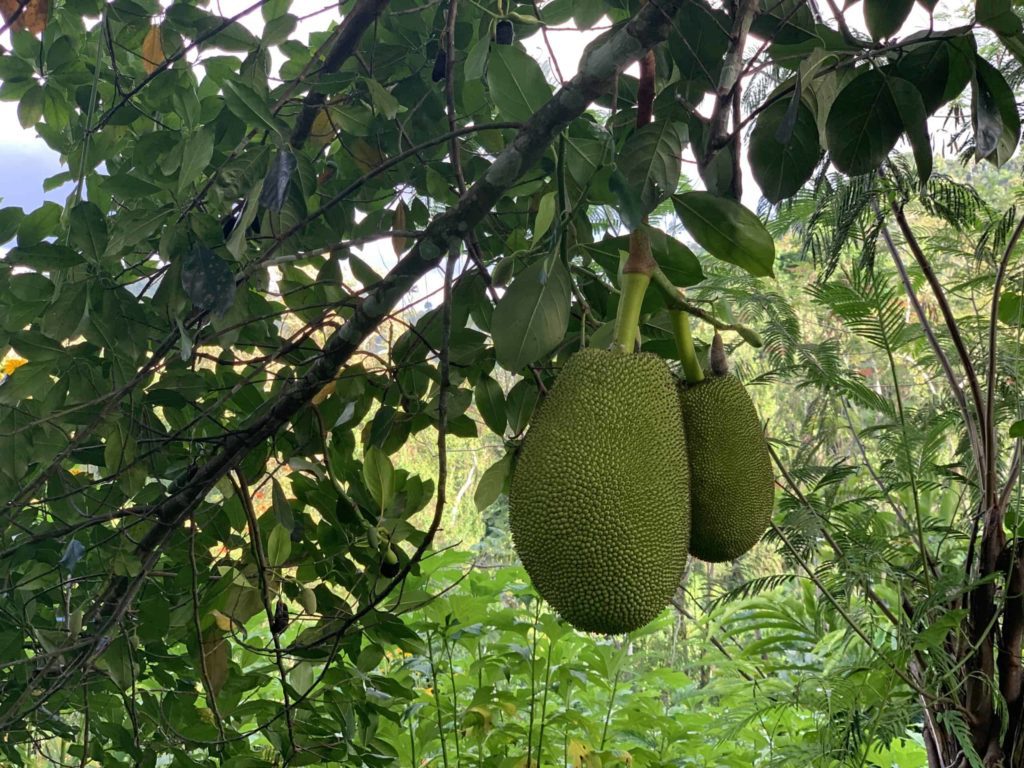
Next, we had the chance to harvest bread fruit, which I personally thought was not a good fruit until I had a chance to eat it later. This so-called fruit does not have any sweet flavor. It tastes more like a potato.
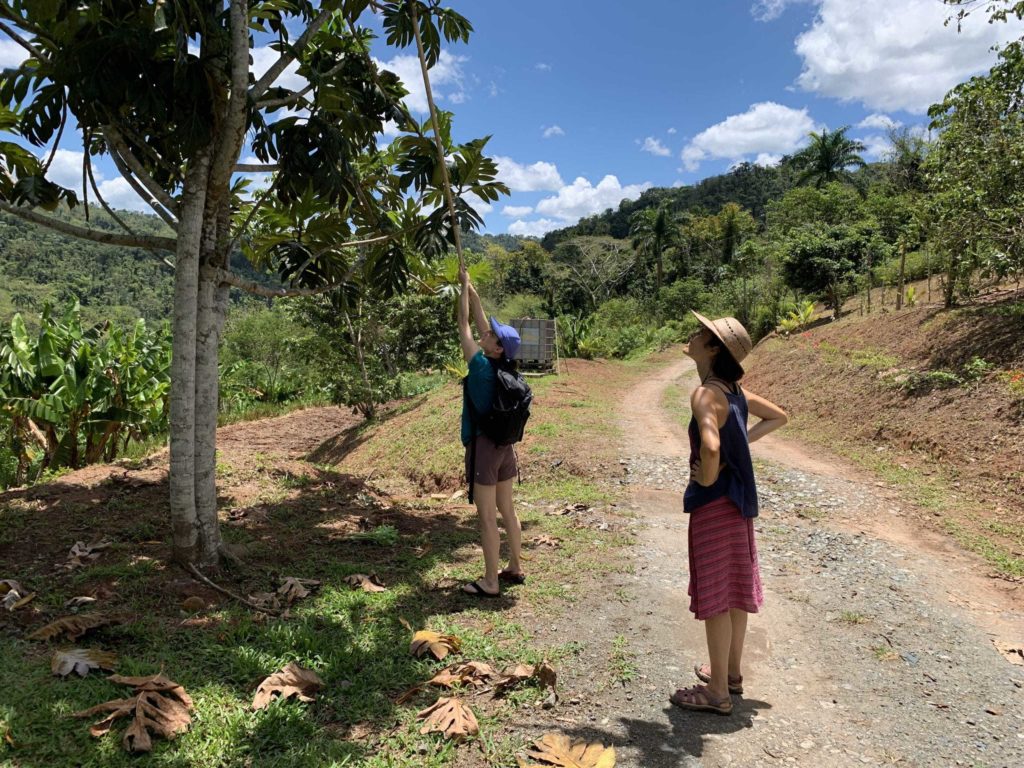
Later for lunch, Paula fried it twice into tostones as one would typically do with plantains. The breadfruit paired well with stewed and deliciously-seasoned jackfruit.
Spinach and Other Greens
Next up was the greenhouse to harvest greens. There was chard, baby arugula, spinach, collard greens, and more. We cut the greens as close to the base as possible.
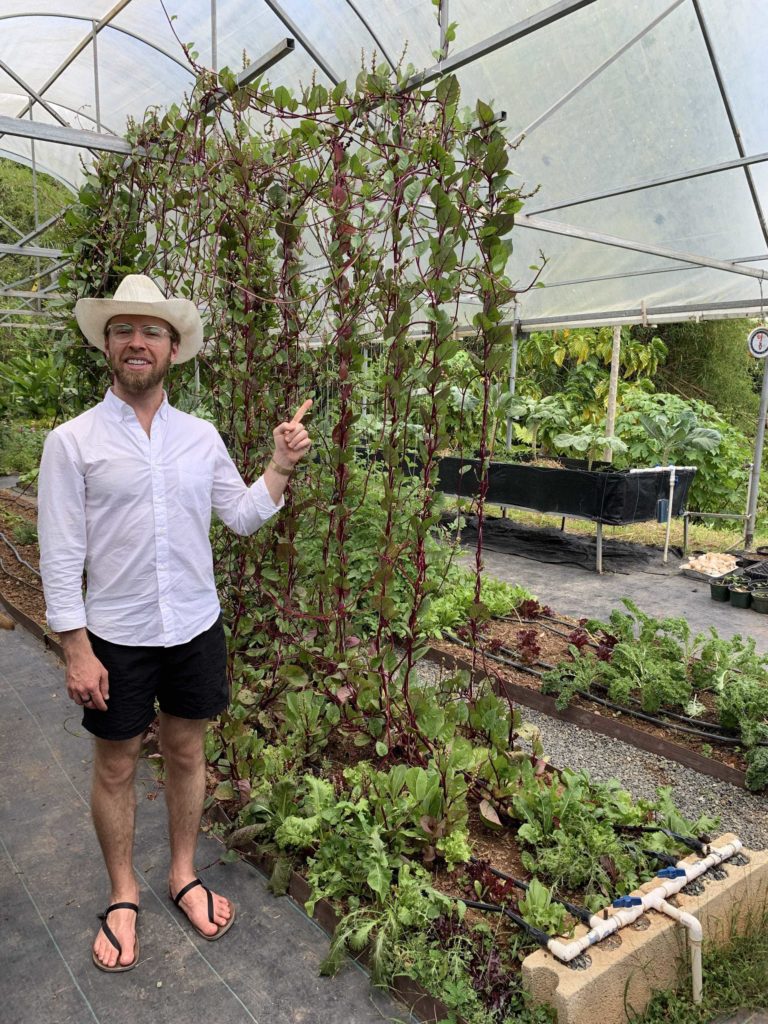
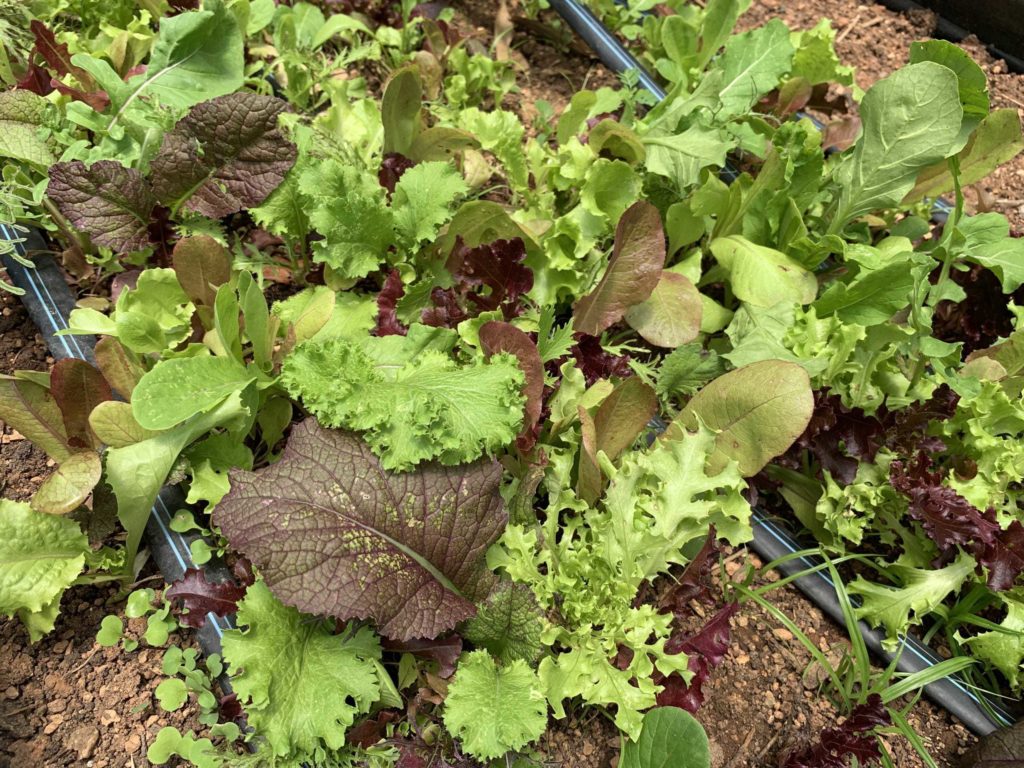
This was very exciting because it was the first time during our visit to Puerto Rico that we saw so many vegetables! Most of the food we have eaten in Puerto Rico before this visit to Plenitud had been fried food.
As we were harvesting, Paula noted that Puerto Rico falls very low in the list of vegetable consumption among all US states and territories. As a native of Puerto Rico, she grew up disliking vegetables because she ate them primarily from a can.
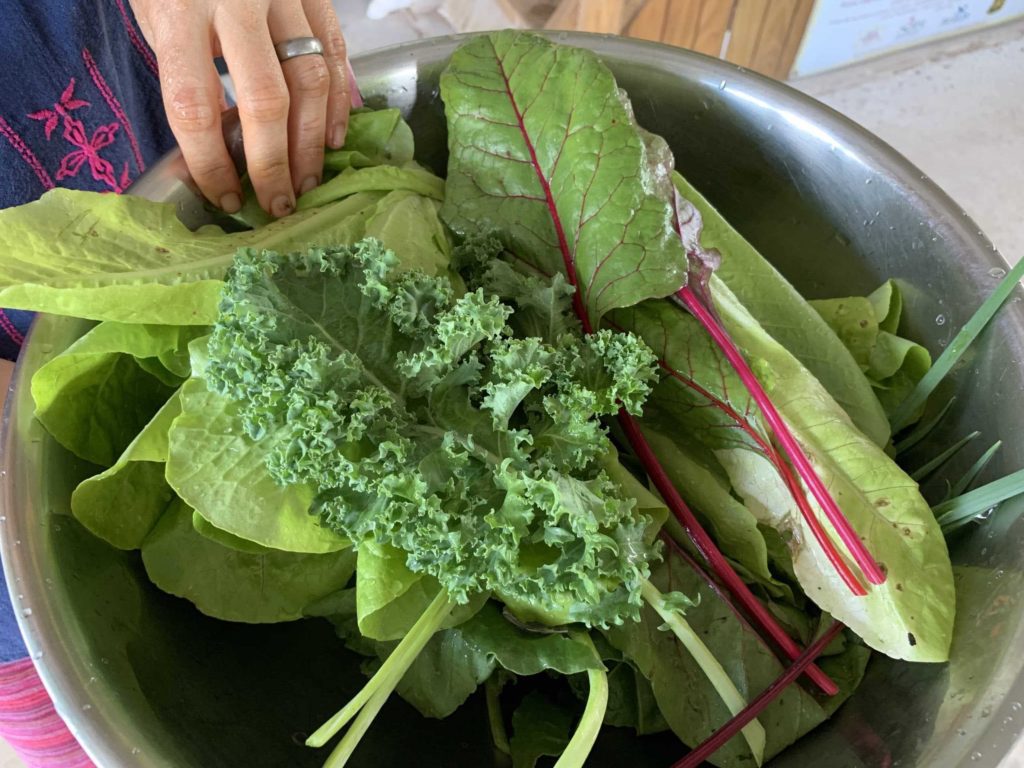
With a fresh bowl of greens, we left to relax on the gazebo while Paula and others prepared our lunch.
Hammock Gazebo
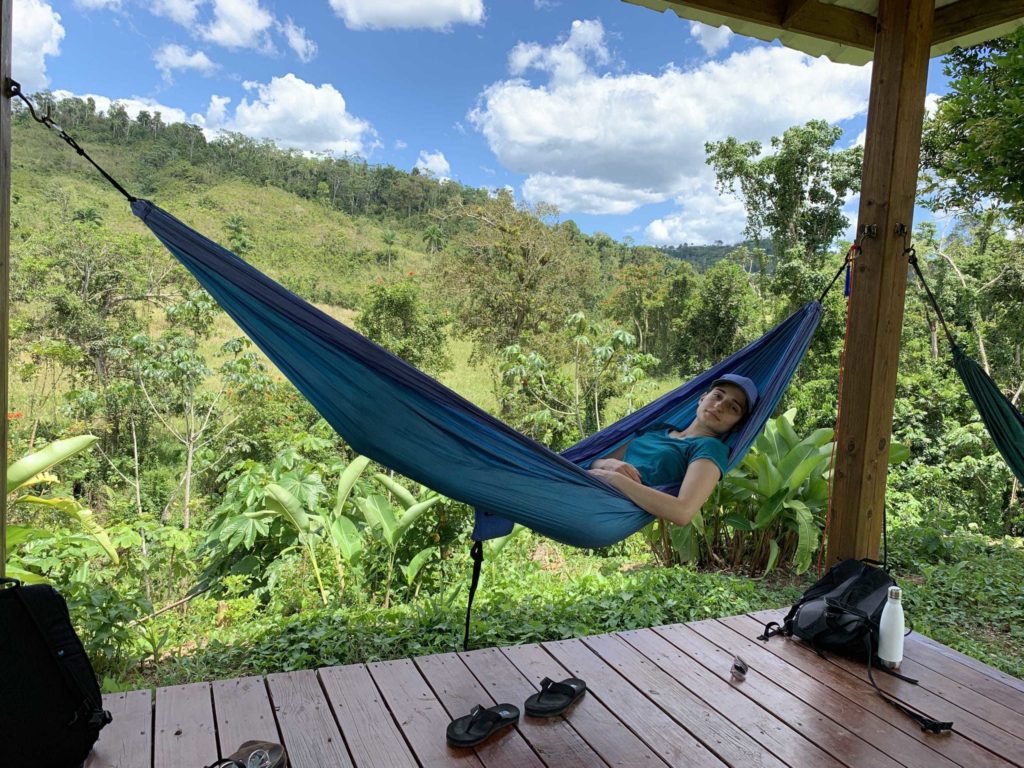
This was my favorite space on the farm. It was so nice to relax here and listen to the sounds of the river. I even fell asleep for a few minutes.
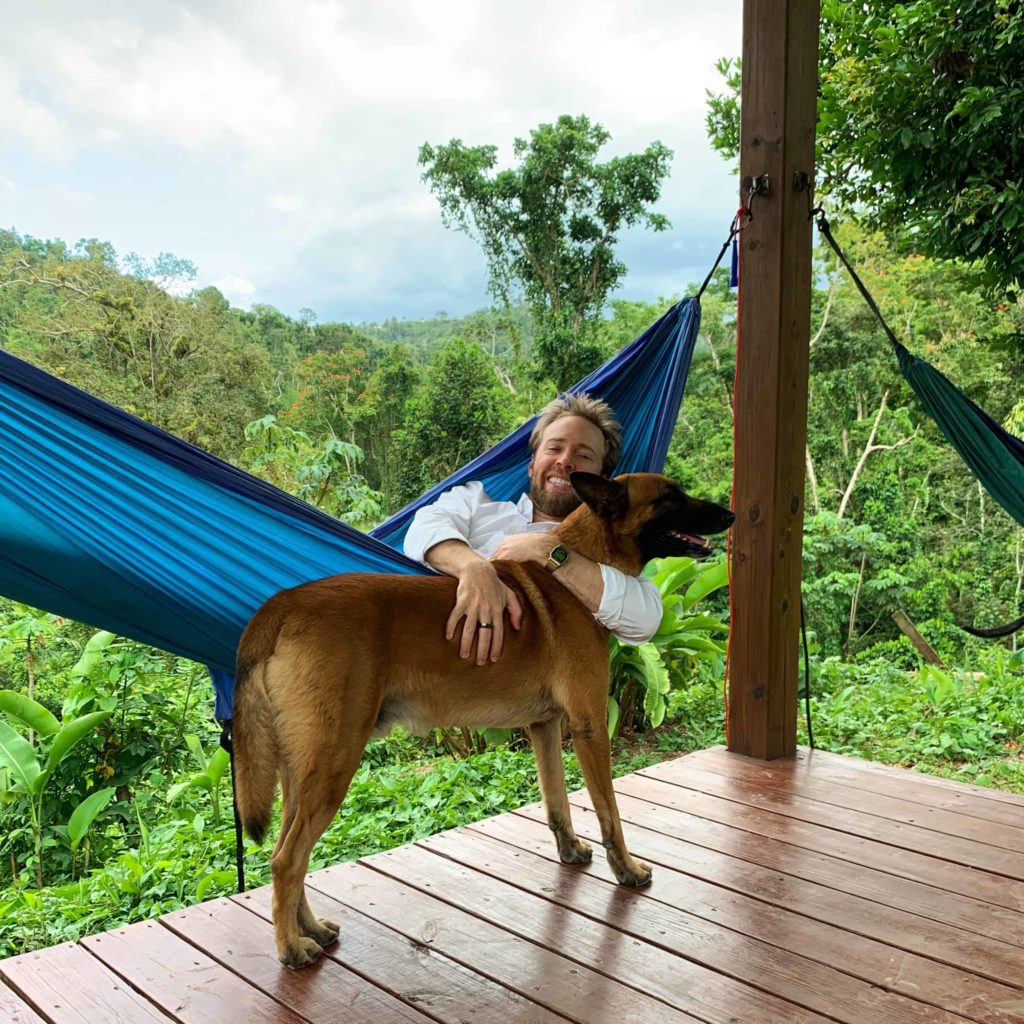
Vegetarian Lunch at Plenitud
Time for lunch, and what a treat it was! It was an honor to have our meal prepared by the founders of this sustainable permaculture farm in Puerto Rico. The food was extra delicious.

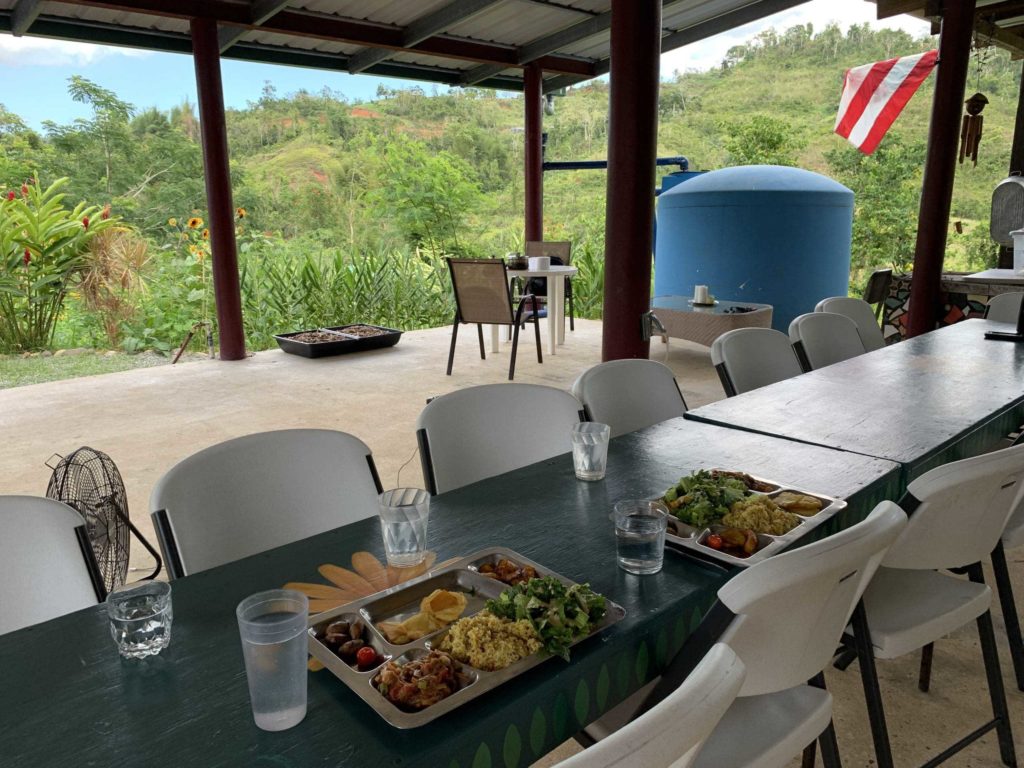
Questions for Plenitud
During lunch, I asked these questions of the Plenitud team. I’ve included their answers as I remember them after each question.
What’s the point? What are you trying to do here?
We share love with the local community and beyond by offering workshops, cooking, and farming grounded in principles of permaculture. Owen noted that though people may connect with Plenitud initially for more external components (farming/building practices), they ultimately come away with an internal shift.
Could you franchise Plenitud in different parts of Puerto Rico?
Owen suggested we read the book Small is Beautiful: Economics as if People Mattered by E.F. Schumacher. Then Owen said, “We’re trying to grow organically, just through relationships. When we find the right people, the “Who,” we get more energy into those special projects. Like now, with Rebecca, doing more agriculture.
When kids come to alternative breaks, they never knew they could eat vegetarian food for a week. Sometimes they get letters years later from the students about how much their visit changed their lives.”
What are your most popular workshops?
Last year we got a grant from the Hispanic Society to fund workshops on bio construction.
What are your major funding sources?
Many grants and volunteers.
How much is your annual budget?
$150k-$250k/year.
How do you manage your alumni list?
Hector on their team does this. He uses Trailblazer software for non-profits. We talked about making an ask to alumni, especially the students, immediately after visiting. They had concerns whether this would give “bad vibes,” but also “You miss 100% of the shots you don’t take.”
What’s up with your Airbnb tours / what has your experience been?
There isn’t enough traffic here yet. It is too difficult to host a couple people a day at $25 per tour. While they want to share the land and mission with others, there is also work to be done everyday by each member of the team.
Why is dance so important?
Folks around the table look at each other and smile before replying, “Why not??”
How do the Alternative Spring Breaks for college students work?
College students from alternative spring break programs shared in a promotional video that they came to Plenitud thinking about externalities: vegetarian food for a week, learning about permaculture farming and building practices etc. And then they came away impacted most by an internal shift within themselves.
With lunch finished, we explored the farm a little more.
After four or five hours it was time for us to leave and continue our trip around Puerto Rico.
Conclusion
It was an excellent afternoon and I enjoyed my visit. I suggest visiting Plenitud to anyone who is interested in vegetables, farming, Airbnb experiences, and seeing a more rural side of Puerto Rico. Now I have a lot more respect for the work they are doing.
Thank you to Paula, Owen, Rebecca, Christina, and Hector for hosting us with open hearts and minds.
Special thanks to Rachel McEvoy for help exploring this space and editing this article.
More Information
More Pictures
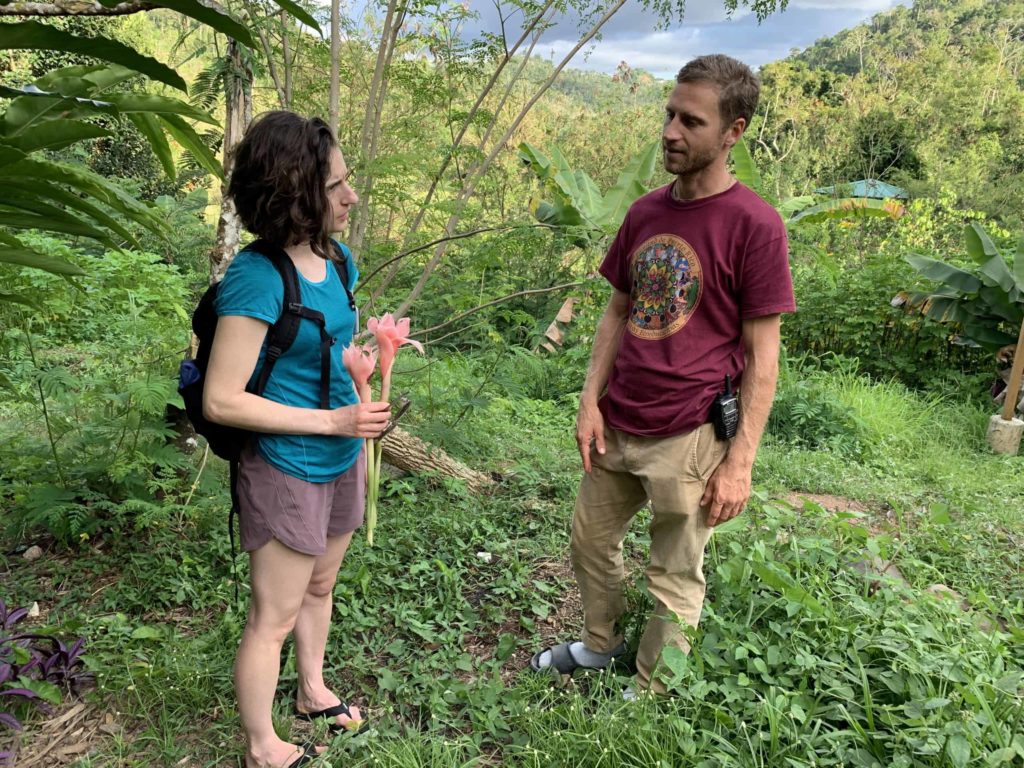
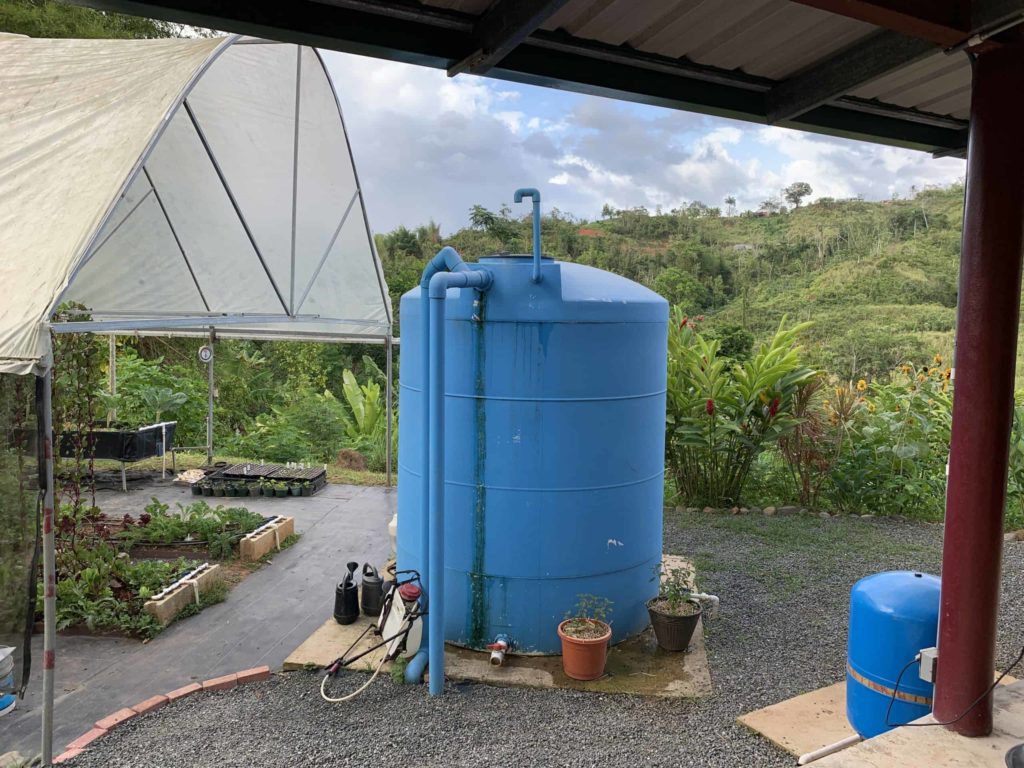
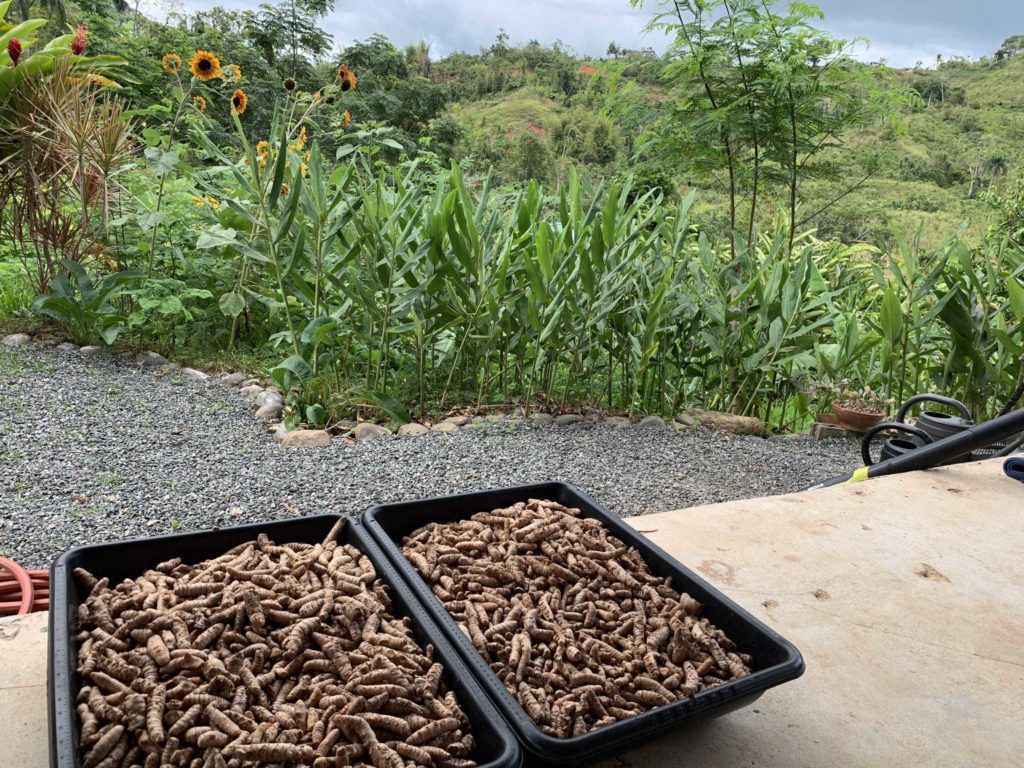
Thanks to JD at Plenitud for providing corrections and updates on the above!
If you liked this article, you may want to read more about Willamette Gardens, Corvallis Plant Nursery in Oregon.

